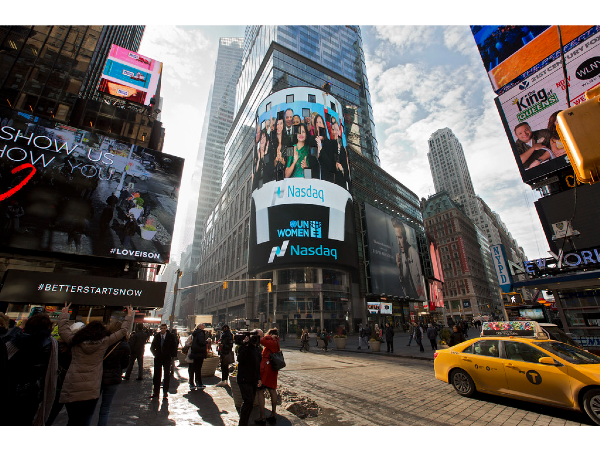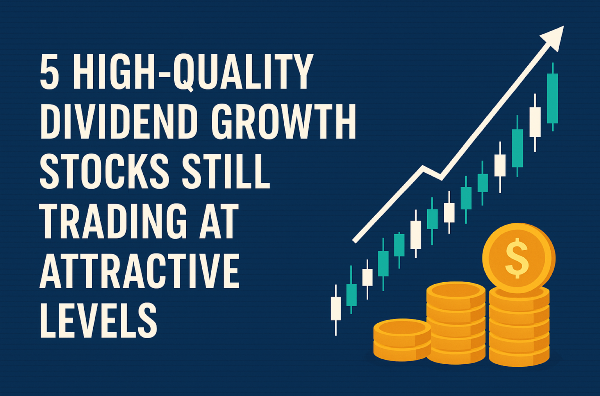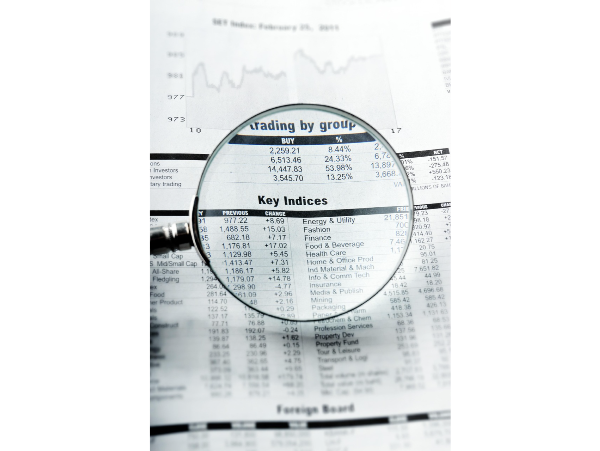Introduction
In the digital age, cybersecurity has become an essential pillar for businesses, governments, and individuals alike. The increasing reliance on cloud computing, the proliferation of connected devices (IoT), and the rise of remote work have dramatically expanded the attack surface for cybercriminals. As a result, the cybersecurity industry is experiencing rapid growth, with global spending expected to surpass $250 billion by 2027. While large-cap cybersecurity companies such as Palo Alto Networks and CrowdStrike dominate headlines, small-cap cybersecurity stocks—typically defined as companies with market capitalizations between $300 million and $2 billion—are emerging as some of the most compelling investment opportunities. These agile firms are often at the forefront of innovation, addressing niche markets and developing next-generation solutions that can disrupt the status quo.
This essay explores why small-cap cybersecurity stocks represent the next big investment opportunity, the key trends fueling their growth, the characteristics of the best candidates, and profiles of several promising companies. It also discusses the risks and strategies for investing in this dynamic sector.
The Cybersecurity Landscape: Why Small-Caps Matter
- Rising Threats and Expanding Market
Cyberattacks are becoming more frequent and sophisticated, targeting organizations of all sizes. Ransomware, phishing, supply chain attacks, and state-sponsored hacking have made headlines worldwide. The financial and reputational costs of data breaches are soaring, prompting companies to increase their cybersecurity budgets. According to industry analysts, the cybersecurity market is projected to grow at a compound annual growth rate (CAGR) of over 10% through 2030.
Small-cap cybersecurity companies are well-positioned to capitalize on this growth. Their nimbleness allows them to quickly develop and deploy innovative solutions, often targeting emerging threats or underserved market segments. As the demand for specialized security products rises, small-caps can scale rapidly, capturing market share from slower-moving incumbents.
- Innovation and Agility
Unlike large, established firms that may be constrained by bureaucracy and legacy systems, small-cap cybersecurity companies are typically more agile. They can pivot quickly in response to new threats and technological shifts. Many focus on cutting-edge areas such as artificial intelligence (AI)-driven threat detection, zero-trust security architectures, cloud-native security, and endpoint protection. Their ability to innovate and bring new products to market swiftly gives them a competitive edge.
- Acquisition Targets
The cybersecurity sector is highly fragmented, with hundreds of small and mid-sized players. Large technology companies and cybersecurity giants frequently acquire innovative small-caps to enhance their product portfolios and remain competitive. These acquisitions often occur at significant premiums, providing lucrative exit opportunities for early investors in small-cap firms.
- Under-the-Radar Value
Many small-cap cybersecurity stocks are overlooked by institutional investors and analysts, resulting in attractive valuations relative to their growth prospects. This creates opportunities for individual investors to identify high-potential companies before they become widely recognized.
Key Trends Fueling Small-Cap Cybersecurity Growth
- Cloud Security and Remote Work
The shift to cloud computing and remote work has expanded the attack surface for organizations, increasing demand for cloud-native security solutions. Small-cap firms specializing in securing cloud environments, managing identities, and enabling secure access are experiencing rapid growth.
- Ransomware and Advanced Threats
Ransomware attacks have surged in frequency and severity, targeting businesses, hospitals, and critical infrastructure. Small-cap companies that offer advanced threat intelligence, incident response, and ransomware mitigation solutions are in high demand.
- Regulatory Compliance
Data privacy regulations such as the General Data Protection Regulation (GDPR) in Europe, the California Consumer Privacy Act (CCPA), and industry-specific requirements are driving organizations to adopt advanced security measures. Small-cap firms that help businesses achieve and maintain compliance are seeing increased demand.
- Artificial Intelligence and Automation
AI and machine learning are transforming cybersecurity by enabling faster detection and response to threats. Small-cap innovators leveraging these technologies are disrupting traditional security paradigms and gaining market share.
What to Look for in Small-Cap Cybersecurity Stocks
- Strong Revenue Growth
Companies with consistent, double-digit revenue growth are likely experiencing successful product adoption and market expansion. Look for firms with a history of growing sales, expanding customer bases, and increasing recurring revenue.
- Proprietary Technology
Firms with unique, patented, or highly differentiated technology have a competitive edge and greater pricing power. Assess the company’s intellectual property portfolio and the uniqueness of its solutions.
- Strategic Partnerships
Collaborations with larger tech companies, cloud providers, or government agencies can accelerate growth and validate a company’s solutions. Partnerships often provide access to new markets and customers.
- Recurring Revenue Model
Subscription-based or Software-as-a-Service (SaaS) models provide predictable, recurring revenue and higher margins. Companies with a high percentage of recurring revenue are generally more resilient and attractive to investors.
- Robust Balance Sheet
A strong cash position and prudent capital management reduce the risk of dilution or financial distress as the company scales. Review the firm’s cash runway, debt levels, and funding history.
Promising Small-Cap Cybersecurity Stocks
Tenable Holdings (TENB)
Tenable specializes in vulnerability management and cyber exposure solutions, helping organizations identify and remediate security risks across IT environments. Its Nessus platform is widely recognized, and the company’s recurring revenue model supports robust growth. Tenable’s focus on continuous innovation and expanding product offerings positions it as a leader among small-cap cybersecurity firms.
Website: https://www.tenable.com
Rapid7 (RPD)
Rapid7 offers a comprehensive security analytics and automation platform, including vulnerability management, incident detection, and response. Its focus on cloud-native solutions and an expanding customer base make it a strong contender in the small-cap space. Rapid7’s Insight platform leverages AI and automation to help organizations proactively manage security risks.
Website: https://www.rapid7.com
SailPoint Technologies (SAIL)
SailPoint is a leader in identity governance and administration, providing solutions that help organizations manage user access and comply with regulatory requirements. As identity security becomes more critical, SailPoint’s cloud-based offerings are gaining traction with enterprises seeking to secure hybrid and multi-cloud environments.
Website: https://www.sailpoint.com
Varonis Systems (VRNS)
Varonis specializes in data security and analytics, protecting sensitive information from insider threats and cyberattacks. Its platform is particularly valuable for organizations managing large volumes of unstructured data, such as files, emails, and databases. Varonis’s focus on automation and threat detection makes it a standout small-cap player.
Website: https://www.varonis.com
CyberArk Software (CYBR)
CyberArk focuses on privileged access management, a crucial area for preventing breaches and insider threats. Its solutions are trusted by many Fortune 500 companies, and the firm continues to innovate in cloud and DevOps security.
Website: https://www.cyberark.com
Risks and Considerations
● Market Volatility: Small-cap stocks are generally more volatile than large-caps, with larger price swings during market corrections.
● Execution Risk: Rapid growth can strain resources and management teams, leading to operational challenges.
● Competition: The cybersecurity sector is highly competitive and fast-evolving, with constant pressure from both startups and established giants.
● Valuation Risk: Some small-cap cybersecurity stocks may trade at high multiples due to growth expectations, increasing downside risk if growth slows.
Strategies for Investing in Small-Cap Cybersecurity Stocks
- Diversification
Given the risks, diversify your investments across several small-cap cybersecurity stocks and related sub-sectors (cloud security, identity management, endpoint protection, etc.).
- Focus on Fundamentals
Prioritize companies with strong revenue growth, recurring revenue, proprietary technology, and a clear path to profitability.
- Monitor News and Partnerships
Stay updated on product launches, customer wins, regulatory approvals, and M&A activity, as these can significantly impact stock performance.
- Long-Term Perspective
While small-cap cybersecurity stocks can be volatile in the short term, their long-term growth prospects remain compelling as digital threats continue to evolve.
Conclusion
Small-cap cybersecurity stocks offer investors a compelling combination of innovation, growth potential, and exposure to one of the most critical sectors of the digital economy. By focusing on companies with strong technology, recurring revenue models, and strategic partnerships, investors can position themselves to benefit from the next wave of cybersecurity breakthroughs. While risks remain, the rewards for those who conduct thorough research and maintain a long-term perspective can be substantial. As cyber threats continue to evolve, today’s small-cap cybersecurity innovators could become tomorrow’s industry leaders—making this sector the next big investment opportunity.































Introduction In the digital age, cybersecurity has become an essential pillar for businesses, governments, and individuals alike. The increasing reliance on cloud computing, the proliferation of connected devices (IoT), and the rise of remote work have dramatically expanded the attack surface for cybercriminals. As a result, the cybersecurity industry is experiencing rapid growth, with global spending expected to surpass $250 billion by 2027. While large-cap cybersecurity companies such as Palo Alto Networks and CrowdStrike dominate headlines, small-cap cybersecurity stocks—typically defined as companies with market capitalizations between $300 million and $2 billion—are emerging as some of the most compelling investment opportunities. These agile firms are often at the forefront of innovation, addressing niche markets and developing next-generation solutions that can disrupt the status quo. This essay explores why small-cap cybersecurity stocks represent the next big investment opportunity, the key trends fueling their growth, the characteristics of the best candidates, and profiles of several promising companies. It also discusses the risks and strategies for investing in this dynamic sector.
The Cybersecurity Landscape: Why Small-Caps Matter
Key Trends Fueling Small-Cap Cybersecurity Growth
What to Look for in Small-Cap Cybersecurity Stocks
Promising Small-Cap Cybersecurity Stocks Tenable Holdings (TENB) Tenable specializes in vulnerability management and cyber exposure solutions, helping organizations identify and remediate security risks across IT environments. Its Nessus platform is widely recognized, and the company’s recurring revenue model supports robust growth. Tenable’s focus on continuous innovation and expanding product offerings positions it as a leader among small-cap cybersecurity firms. Website: https://www.tenable.com Rapid7 (RPD) Rapid7 offers a comprehensive security analytics and automation platform, including vulnerability management, incident detection, and response. Its focus on cloud-native solutions and an expanding customer base make it a strong contender in the small-cap space. Rapid7’s Insight platform leverages AI and automation to help organizations proactively manage security risks. Website: https://www.rapid7.com SailPoint Technologies (SAIL) SailPoint is a leader in identity governance and administration, providing solutions that help organizations manage user access and comply with regulatory requirements. As identity security becomes more critical, SailPoint’s cloud-based offerings are gaining traction with enterprises seeking to secure hybrid and multi-cloud environments. Website: https://www.sailpoint.com Varonis Systems (VRNS) Varonis specializes in data security and analytics, protecting sensitive information from insider threats and cyberattacks. Its platform is particularly valuable for organizations managing large volumes of unstructured data, such as files, emails, and databases. Varonis’s focus on automation and threat detection makes it a standout small-cap player. Website: https://www.varonis.com CyberArk Software (CYBR) CyberArk focuses on privileged access management, a crucial area for preventing breaches and insider threats. Its solutions are trusted by many Fortune 500 companies, and the firm continues to innovate in cloud and DevOps security. Website: https://www.cyberark.com
Risks and Considerations ● Market Volatility: Small-cap stocks are generally more volatile than large-caps, with larger price swings during market corrections. ● Execution Risk: Rapid growth can strain resources and management teams, leading to operational challenges. ● Competition: The cybersecurity sector is highly competitive and fast-evolving, with constant pressure from both startups and established giants. ● Valuation Risk: Some small-cap cybersecurity stocks may trade at high multiples due to growth expectations, increasing downside risk if growth slows.
Strategies for Investing in Small-Cap Cybersecurity Stocks
Conclusion Small-cap cybersecurity stocks offer investors a compelling combination of innovation, growth potential, and exposure to one of the most critical sectors of the digital economy. By focusing on companies with strong technology, recurring revenue models, and strategic partnerships, investors can position themselves to benefit from the next wave of cybersecurity breakthroughs. While risks remain, the rewards for those who conduct thorough research and maintain a long-term perspective can be substantial. As cyber threats continue to evolve, today’s small-cap cybersecurity innovators could become tomorrow’s industry leaders—making this sector the next big investment opportunity.